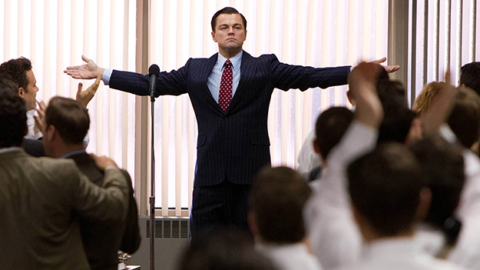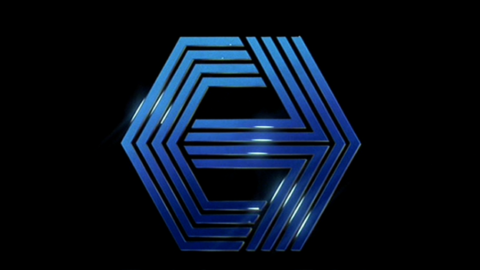Interview: Thelma Schoonmaker
While directors, cinematographers, and other manufacturers of the image hog the mystique, there are relatively few “name” editors. Thelma Schoonmaker is one exception who proves the rule. This is in part because of the unprecedented plaudits that Schoonmaker has received in her field, winning three Academy Awards, out of a total of seven nominations. This recognition has come through the single most vital artistic relationship of her career, with director Martin Scorsese. Their collaboration began in 1967 with Scorsese’s feature debut, Who’s That Knocking at My Door, became habitual with 1980’s Raging Bull, and has continued fruitfully through last year’s The Wolf of Wall Street.
On the occasion of the release of The Wolf of Wall Street on Blu-ray, DVD, and VOD by Paramount, FILM COMMENT spoke briefly with Schoonmaker via phone about the nitty-gritty of cutting.

It seems to me that editing is one of the least understood aspects of filmmaking among us critics. We will say it is “sharp” or “good” or “crisp,” and leave it at that. What are the most common misapprehensions of your art?
There’s a great deal of mystery in film editing, and that’s because you’re not supposed to see a lot of it. You’re supposed to feel that a film has pace and rhythm and drama, but you’re not necessarily supposed to be worried about how that was accomplished. And because there is so little understanding of what really great editing is, a film that’s flashy, has a lot of quick cuts and explosions, gets particular attention. For example, with The Aviator, which I won an Oscar for—I’m sure that decision was based largely on the very elaborate plane crash that Howard Hughes had. That’s so dramatic, and you can really see the editing there, but for me, and for a lot of editors and directors, the more interesting editing is not so visible. It’s the decisions that go into building a character, a performance, for example, or how you rearrange scenes in a movie, if it’s not working properly, so that you can get a better dramatic build.
You’ve said that The Wolf of Wall Street is the most improv-heavy film that you and Scorsese have made in some time. What are the particular challenges of cutting improv?
Scorsese saw right away that this was a group of actors that were going to be wonderfully fertile at improvisation, so he instantly decided to open the film up to that, which meant that a scene that was two pages in the script became five minutes long or something. And so the original cut of the film was longer than was distributable—and “original” doesn’t mean that it was the right cut. So we had to shave down the improvisations very, very carefully, so as not to lose the power of them.
We had certain sequences that were beautifully designed by Scorsese: for example, the opening shots in the movie are all carefully planned, how each of them cuts to the other is carefully planned in his mind. He had plotted all of that out, to give a really big rush at the beginning of the film. And then suddenly you hit the wonderful scene in the restaurant where McConaughey is teaching DiCaprio about Wall Street, and you want to stay there because of the improvisation. The additions that everyone brought meant that the film swelled up, and that scene in particular swelled up. You suddenly come to a screeching halt here, then carry on again.
It was difficult for us to get a rhythm in this movie. Our other films perhaps have more momentum going forward. For people who love the film, they feel it moves very quickly. For people who don’t like it, it doesn’t. The improvisations were such fun to cut—it’s been a long time since we’ve done this amount of improvisation. I really love it, I’ve always loved it, because it’s like a big puzzle you’re handed: how the hell are you going to get it to hang together and seem like a dramatic scene?
The movie is full of conversational comedy scenes like that between McConaughey and DiCaprio. I’d like to talk about the scene at the diner between Jonah Hill and DiCaprio, where Hill’s character is first entranced by Belfort’s lifestyle. Now, I’ve seen the movie three times, and this was never evident in the viewing, but in closely watching this scene there are certain minor continuity gaffes—the tilt of DiCaprio’s head, the movement of the coffee cup. When you’re cutting a scene like this, how do you prioritize between performance and continuity?
The priority is absolutely on the best take for performance, and frankly I don’t understand why people get so hung up on these issues, because if you look at films throughout history, you will see enormous continuity errors everywhere, particularly when you’re talking about the Academy aspect ratio where you see more in the frame. Even in The Red Shoes, a film that nobody ever has complaints about, there are enormous continuity bumps, and it doesn’t matter. You know why? Because you’re being carried along by the power of the film. So throughout our history of improvisational cutting, we have decided to go with the performance, or in this case particularly with the humor of a line, as opposed to trying to make sure a coffee cup is in the right place.
I remember that when I was nominated for an Academy Award for GoodFellas and we lost to Dances with Wolves for editing, the editor of that movie said to me: “Why did you make that bad continuity cut?” And I said “Which cut? Which continuity error? We have tons of them.” He was talking about a scene with Paul Sorvino and another actor who was an amateur, but wonderful, though he didn’t know about matching. It was much more important for us to get this beautiful performance by this untrained actor than to worry about where the cigar is in Paul Sorvino’s hand. One wasn’t want to do that, one would hope not to do that, but if the choice comes between a beautiful, clean line and a laugh, we would always go for the laugh.
The original cut ran four hours. Can you talk about the developments that came in paring the movie down to three-quarters of that length?
It increased the pace at which the movie moved. In every improvisational scene there were maybe four or five lines I would’ve loved to have kept because they were so funny, but it meant that the scene was too long. The four-hour version was actually our first cut—it’s not a version that we would ever have considered distributing. The first people who saw it, who were some of the agents, loved it so much and thought it would work at that length. But Marty and I knew that was impossible to distribute, so we immediately started shaving it down. As we always do with our cuts, they’re always long at first, and you have to keep working to bring it down and get the right pace for the film.
So we lost some lines, but that’s better than losing whole scenes, which has happened with other films I’ve worked on—After Hours, for example. We lost five or six wonderful scenes, and finally I talked Marty into putting them on the After Hours DVD as extras. He doesn’t believe in doing director’s cuts because he, fortunately, has the power to fight until he gets the cut he feels he can live with and the studio can live with, and he does not believe in then creating another version. That was the only time he ever allowed me to put anything else on the DVD—not in the film itself, but as extras.
There are a lot of frisky, almost punch-line cuts in The Wolf of Wall Street, like when Hill’s character asks to see Belfort’s pay stub, and you cut on the click of the briefcase opening. The briefcase is all of a sudden in his lap, without Belfort’s reaching over and picking it up.
Well, the first cut we did, you saw him reach for the briefcase, open the briefcase—but who’s interested in that? That hard cut jumps the film forward, it keeps the energy up in the scene.
There’s another hard, shock cut during the scene of the attempted bribery on Jordan’s boat. Leo’s talking to Kyle Chandler’s FBI agent, and suddenly you cut to a wide shot and see that the other agent has sidled up behind him.
We didn’t expect that to happen. We didn’t expect Kyle Chandler to do that wonderful improv, the way he says: “Well, I think you just tried to bribe a federal agent…” DiCaprio’s reaction is so fantastic, with that false laugh, that “Ha,” and the wonderful way that Kyle delivers that “Little man…” That was strictly improv, and DiCaprio was really shocked by that, for someone of that power and ego to be called a “Little man”—it got a wonderful reaction from Leo. We do love to capitalize on those accidental things, you know. On the set Scorsese loves it when something accidental happens that enriches the film—he pounces on it.
That was a wonderful moment in the improvisation after the long, slow lead-up, where you’re not really sure what’s going on until Kyle says “I think you just tried to bribe a federal agent.” It’s one of Marty’s favorite scenes in the movie, and it was very brave to do such a long, slow build-up. I think a lot of directors would’ve said “Well, let’s just cut to the chase.” I was worried about it at first, frankly. I thought maybe it was too long, but it’s the build that achieves the power at the end.
As for the bit with the other FBI agent: Kyle looks over at him as an indication for him to come over and listen in, and we had footage of him crossing the boat. I was tempted to cut to that, as an editor I would’ve shown him coming over, but Marty said: “Oh, no, no, no, we should cut to the wide shot and he should just be standing there.” It’s a shock, and it’s a shock to the Jordan character too, and I think Marty was so right.





